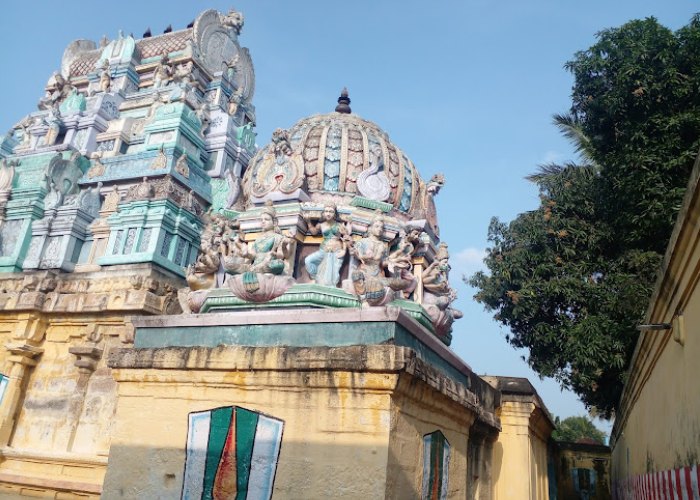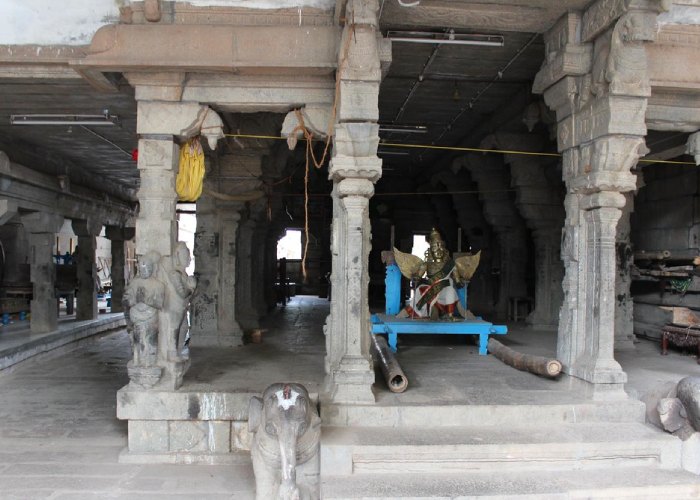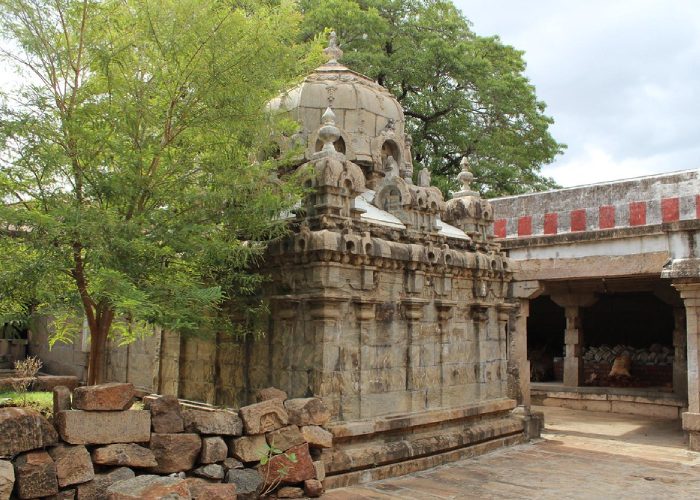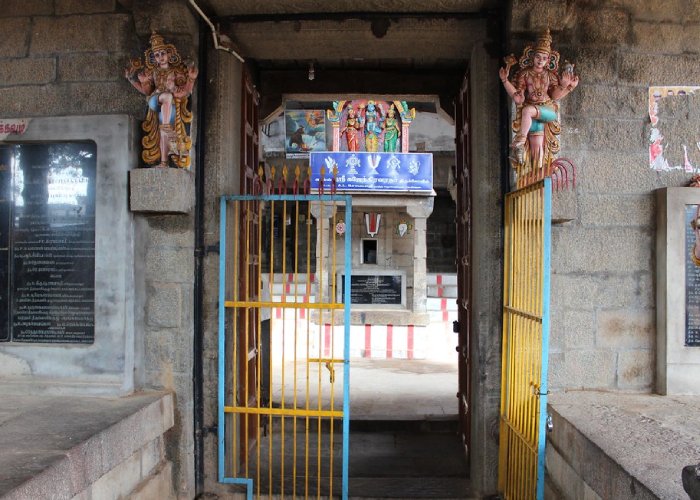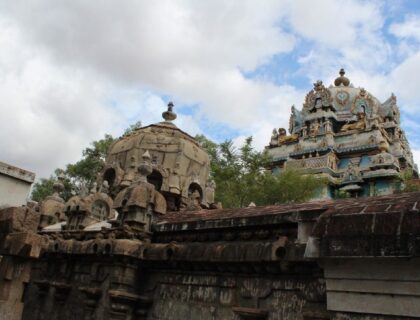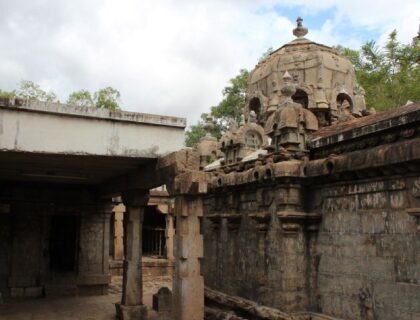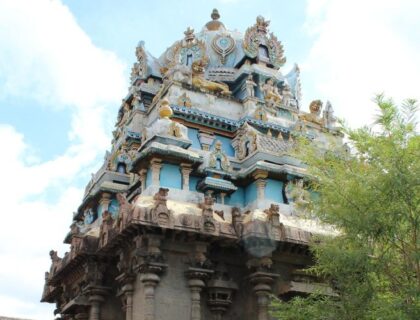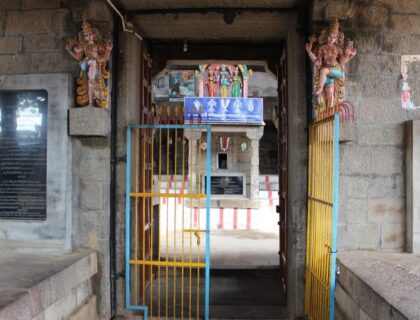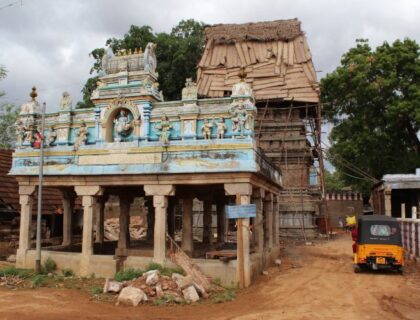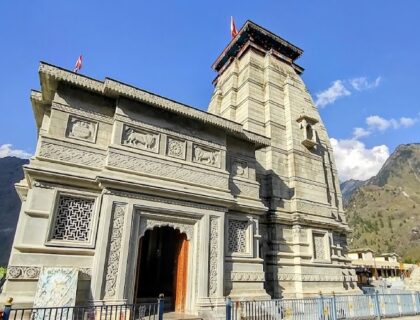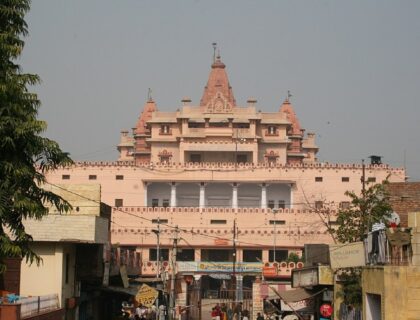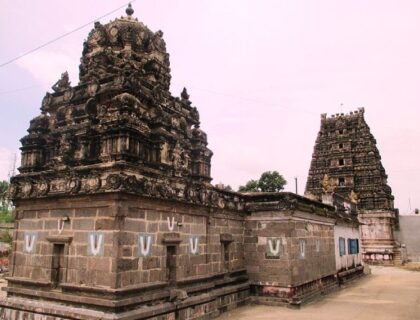Gajendra Varadha Perumal Temple
The Gajendra Varadha Perumal Temple is devoted to the Hindu god Vishnu and is located in Thirukkavithalam, a village on the outskirts of Papanasam in the South Indian state of Tamil Nadu. The temple, built in the Dravidian style, is mentioned in the Nalayira Divya Prabandham, an early mediaeval Tamil canon of the Alvar saints from the 6th to the 9th centuries CE.
It is one of the 108 Divya Desams devoted to Vishnu, known as Gajendra Varadha Perumal, and his spouse Lakshmi, known as Ramamanivalli. The temple is one of five Pancha-Kannan temples in which Krishna, an incarnation of Vishnu, takes precedence over the presiding deity.
The Gajendra Varadha Perumal Temple is thought to have been built in the late 9th century CE by the Mediaeval Cholas, with later contributions from Vijayanagara kings and Madurai Nayaks. The temple is surrounded by a granite wall, which encloses all of its shrines and bodies of water.
Story/Legend of the Gajendra Varadha Perumal temple
According to Hindu legend, King Indrajuman, who became engrossed in Vishnu devotion, failed to strengthen his army and therefore lost his realm. He also failed to see the sage Durvasa (other sources say Agastya) who passed by on his way to worship. The sage became enraged and cursed the king’s next birth as an elephant. The king apologised to the sage for his carelessness, and the sage, moved by his innocence, desired that he would continue to be a Vishnu devotee as an elephant and that Vishnu would bestow kindness on him. In the temple tank at this location, there was a Gandharva named Kuhu who bothered everyone who bathed in it.
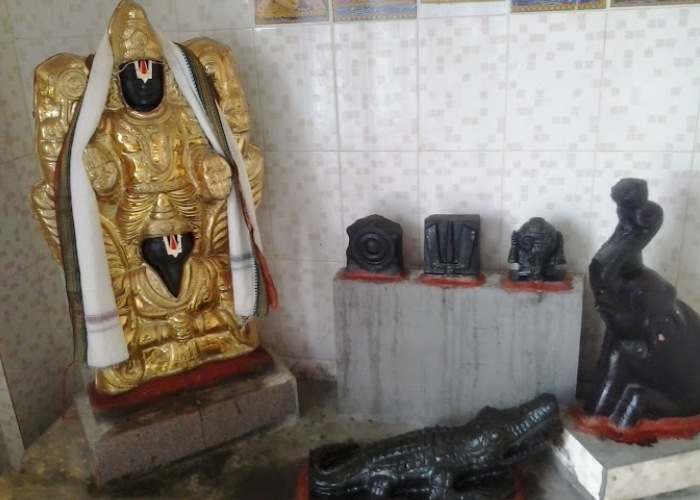
A sage cursed him to be born as a crocodile in his next life. The elephant Gajendra continued to be a Vishnu devotee, and while sipping water from the temple tank, the crocodile seized his leg. Vishnu sent his discus to fend off the crocodile after the elephant called out for help, calling the name “Adimulam.” Vishnu’s mercy transformed both the elephant and the crocodile into human forms.
Vishnu became known as Gajendara Varadar after appearing to save the elephant, Gajendra. Hanuman, Rama’s vanara lieutenant (Vishnu’s incarnation), also worshipped Vishnu here, and the site became known as Kabisthalam (kabi in Tamil meant monkey). This temple is considered one of the 108 Divya Desams.
What is Divya Desams– A Divya Desam or Vaishnava Divya Desam is one of the 108 Vishnu and Lakshmi temples recorded by the Alvars, the poet-saints of the Sri Vaishnava faith. 105 of the 108 temples are in India, one is in Nepal, and the final two are thought to be in space, in Tirupparkatal and Vaikuntham. They are distributed over the Indian states of Tamil Nadu (84), Kerala (11), Andhra Pradesh (2), Gujarat (1), Uttar Pradesh (4), and Uttarakhand (3). Muktinath, Saligramam is Nepal’s sole Divya Desam. The 12 Alvars respect the Divya Desams in the Naalayira Divya Prabandham, a collection of 4,000 Tamil hymns.
History of Gajendra Varadha Perumal temple
The location is well-known for the Gajendra Moksham legend. Gajendra, an elephant, used to pluck lotus blossoms from the pond and offer them to the Lord. When a crocodile grabbed his leg, the elephant called Lord Vishnu for assistance. The Lord then gave the elephant pratyaksham and flung his disc at the crocodile to save the elephant.
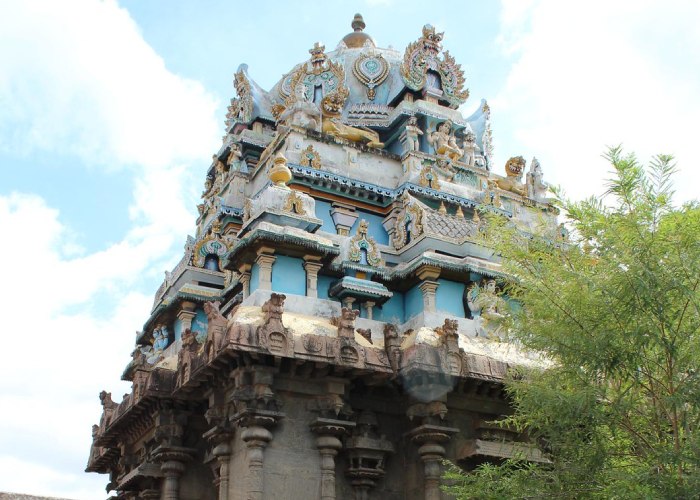
It is also said that the Lord granted Peyalwar another opportunity to see the Gajendra Moksham ceremony at this location. The shrine is considered to be Kanchi’s sole divya desam with a Swarga Vaasal. Another story associated with this temple is that Lord Vishnu appeared with eight hands wielding eight weapons to destroy the deadly snake sent by Saraswati to disrupt Brahma’s home.
Architecture of Gajendra Varadha Perumal temple
The Gajendra Varadha Perumal Temple is located in Kabisthalam, a village 3 kilometres (1.9 miles) from Papanasam and around 20 kilometres (12 miles) from Kumbakonam and Thanjavur, both in the South Indian state of Tamil Nadu. The settlement lies between the rivers Kaveri and Kollidam. The temple is thought to have been built in the late 8th century CE by the Mediaeval Cholas, with later contributions from Vijayanagar monarchs and Madurai Nayaks. The temple is surrounded by a brick wall, which encloses all of its shrines and bodies of water.
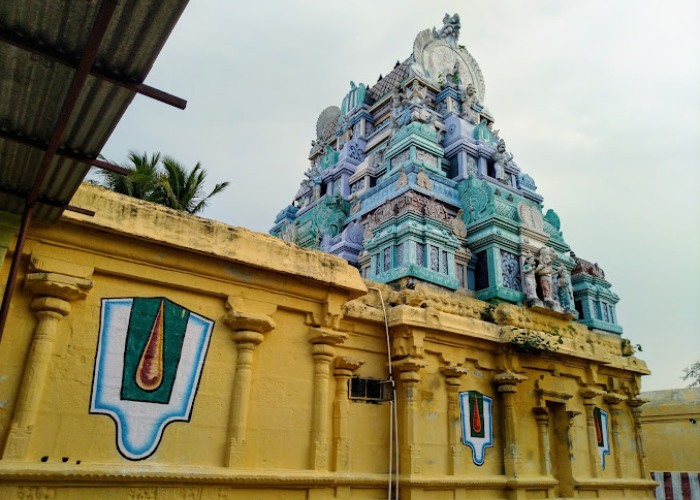
The Gajendra Varadha Perumal Temple comprises a single precinct and a five-tiered rajagopuram. Gajendra Varadar, the primary deity, is housed in the sanctum in a reclining posture known as Bhujanga sayanam. Ganganakrutha Vimanam is the name of the vimana (roof over the sanctum). Ramanavalli has his own shrine, which is positioned to the right of the sanctum. In the first sanctuary, there are shrines for Yoga Narasimhar, Sudarsana, Garuda, and the Alvars. The main temple tank is called Gajendra Pushkarani, and there is another tank inside the temple complex called Kapila Theertham.
Facts about Gajendra Varadha Perumal temple
- Gajendra Varada is said to have appeared to Gajendra, the elephant also known as Indrajumnan, the crocodile known as Kuhu, Sage Parasara, and Anjaneya.
- The Gajendra Varadha Perumal Temple is revered in Nalayira Divya Prabandham, the 7th–9th century Vaishnava canon, by Tirumalisai Alvar in one hymn.
- The Gajendra Varadha Perumal Temple is classified as a Divya Desams, one of the 108 Vishnu temples mentioned in the book.
- Because the location is only mentioned briefly in the verse, it was previously unclear whether the verse referred to the temple.
- Religious scholars regard this location as a unique Vishnu temple since he descended to save an animal, although he appeared in all other locations to save sages, heavenly beings, or demons.
- One of the Panchakanna (Krishnaranya) Kshetrams is this temple. Kannan relates to Krishna, Vishnu’s incarnation, while pancha signifies five and Kshetrams are holy locations.
- The Gajendra Varadha Perumal Temple is maintained and administered by the Hindu Religious and Endowment Board of the Government of Tamil Nadu.
Famous Festivals In Gajendra Varadha Perumal temple
- The Gajendra Moksha Leela is celebrated in the Tamil month of Adi (July–August).
- Chariot festival during the Tamil month of Vaikasi (May–June) on Visakam star.
- Brahmmotsavam is the major festival celebrated in the temple.
- Diwali – Diwali is one of the most admired and auspicious festivals in the town.
- Chitra Poornima is also a significant occasion for celebration in the temple.
- Vaikuntha Ekadashi – Vaikuntha Ekadashi celebrated during the Tamil month of Margazhi (December–January) is the major festival celebrated in the temple.
How To reach Gajendra Varadha Perumal temple
The Gajendra Varadha Perumal Temple is located in Kabisthalam, a village situated 3 km (1.9 mi) away from Papanasam and around 20 km (12 mi) away from Kumbakonam and Thanjavur, towns in the South Indian state of Tamil Nadu.
By Air: The nearest airport is in Trichy, about 80 km from here, which is both a national and an international airport.
By Railway: Thanjavur railway station is located about 25 kilometres from the temple.
By Roadways: Autos, Buses and taxis are also available for comfortable transportation.
Also Read – Valvil Rama Temple or Thirupullabhoothangudi

